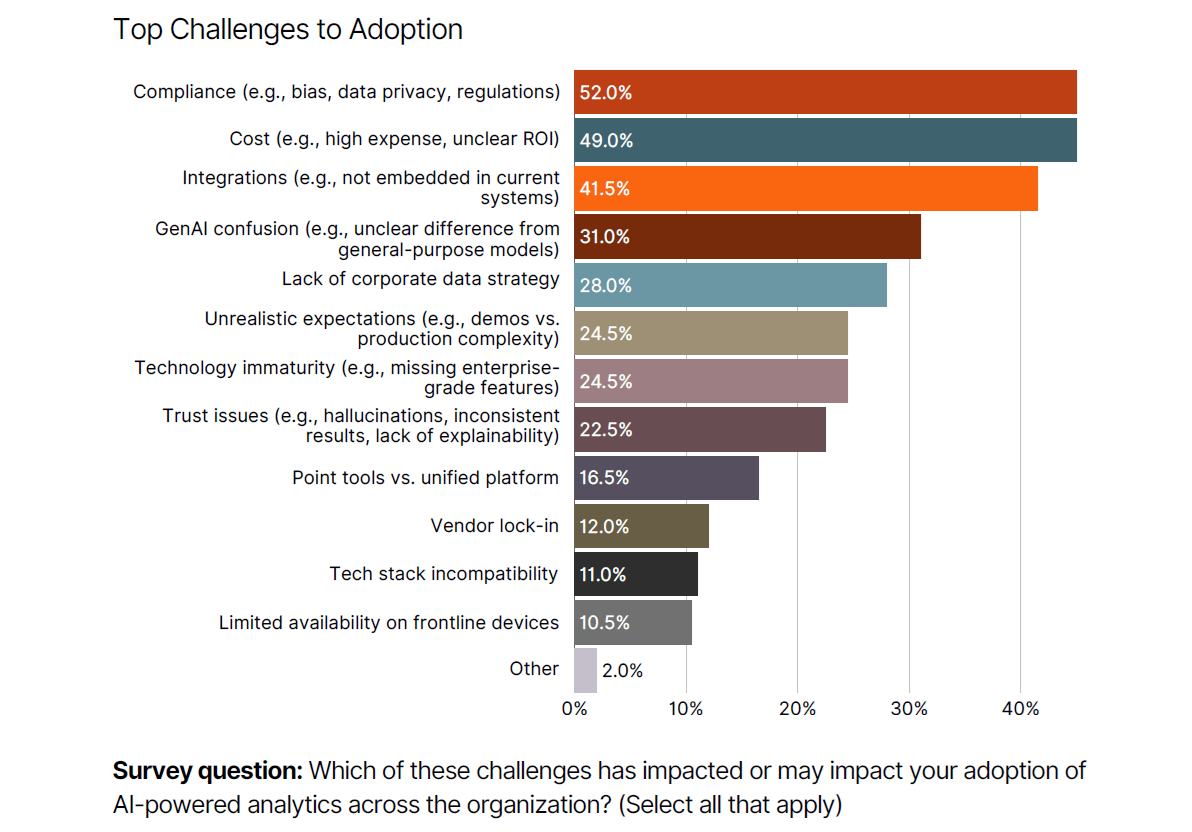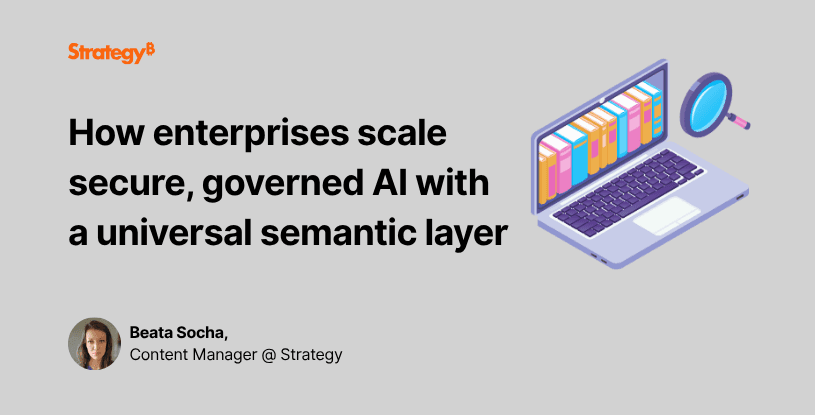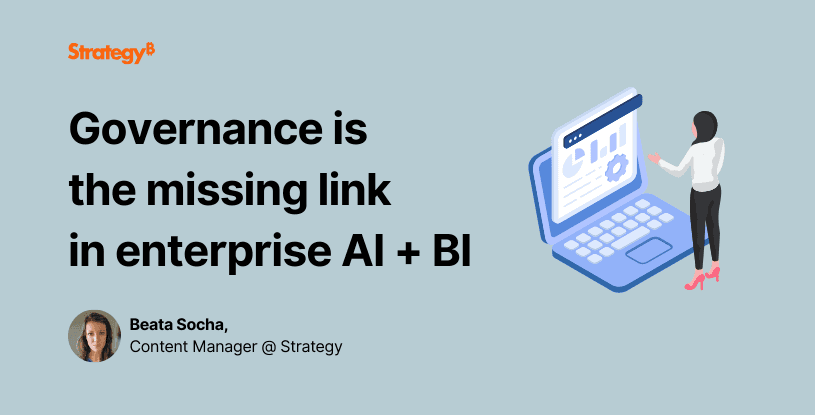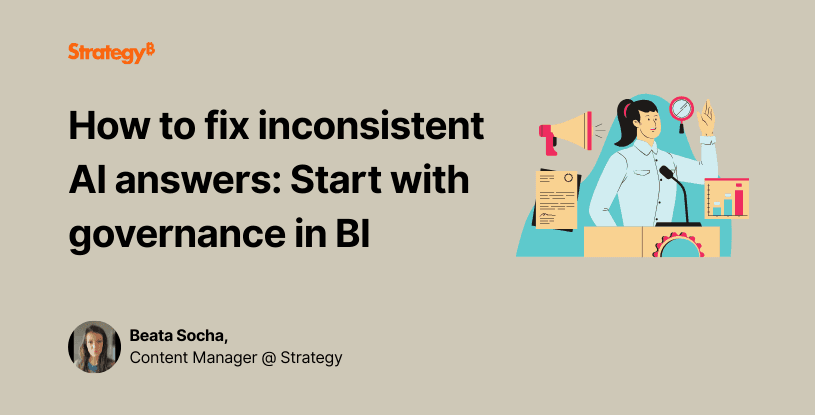Why data governance is the cornerstone of trustworthy AI in 2026
As AI-powered analytics shifts from pilot projects to enterprise-wide production, one factor remains non-negotiable: governance. See why strong governance is critical for AI success—and learn how organizations are using enablers like semantic layers to control, protect, and operationalize data for every user.
Data and AI are inseparable—and governance keeps them aligned
In an ideal world, data, and AI work in perfect harmony. Each data input is clear and consistent, allowing AI to generate precise answers, reports, and dashboards—every single time.
In reality, enterprises must collect data across thousands of sources, applications, and platforms. Without clear governance, this landscape fragments—and ungoverned AI becomes unpredictable, non-compliant, and unsafe.
As AI-powered analytics becomes an integral part of business intelligence, leaders are increasingly aware of the risks of a poorly governed data strategy. According to the Global 2025 Report, 38.3% of organizations now list governance frameworks and semantic layers as a top investment area.
Why? Because without a governance foundation, even the most advanced AI can’t deliver reliable outcomes.
Why data governance is critical for AI in 2026
AI-powered analytics differs from traditional BI in one key element: instead of dashboards designed by a handful of specialists, AI + BI empowers thousands of employees to query data directly using natural language.
That means every output must be accurate, consistent, and explainable to users—from executives to frontline workers. When datasets are inconsistent, the consequences escalate fast: inaccurate outputs, compliance failures, and lost trust across the enterprise.
Governance eliminates this risk by defining common rules for how data is structured, labeled, secured, and accessed. Supporting mechanisms like a universal semantic layer then operationalize these rules by transforming scattered data into a consistent, business-ready lens.
As Brett Sheppard, the author of the Global 2025 Report, notes:
“True intelligence must be portable, open, and sovereign—because your ability to move, scale, and adapt is what determines your competitive edge.”
New frameworks for AI regulation and compliance
Data governance is not just about accuracy—it’s also about protection against risk and regulatory failure.
52% of organizations now identify compliance and regulatory readiness as their biggest adoption challenge. With new frameworks like the EU AI Act and the NIST AI Risk Management Framework, enterprises must prove—not just claim—that their AI systems are transparent, auditable, and free from bias.

Source: The State of AI+BI Analytics Global 2025 Report
By aligning internal processes with these frameworks, organizations can turn governance from a reactive defense into a proactive competitive edge.
The result? They demonstrate responsible AI practices, minimize the risk of regulatory scrutiny, and strengthen trust with boards, regulators, and investors alike.
5 elements of a strong AI and data governance strategy
How are leading businesses unlocking governed, compliant AI?
According to the State of AI+BI Analytics Global Report, the five factors for a robust governance strategy include:
Semantic data layers: Ensure consistent definitions across the enterprise
Transparency: Make it obvious how insights are generated and validated
Access controls: Balance openness with security by assigning the right permissions
Auditability: Keep a clear record of data flows, model decisions, and user actions
Risk management: Use frameworks like NIST AI RMF to identify and mitigate risks proactively
Enablers such as semantic layers and metadata-driven data fabrics make these practices scalable—so governance doesn’t stall under enterprise complexity.
Together, these elements build trust and resilience, helping enterprises expand AI adoption without exposing themselves to compliance or reputational risks.
Get the framework for governed AI adoption
AI-powered analytics has the potential to anticipate, surface, and deliver insights proactively. But that potential collapses without governance.
With governance, AI in BI doesn’t just become reliable—it becomes the enterprise decision-making hub leaders, regulators, and employees can count on.
The bottom line: AI adoption is accelerating, but only governed AI will endure. Organizations that act today are building the trust and compliance their competitors will scramble to match tomorrow.



